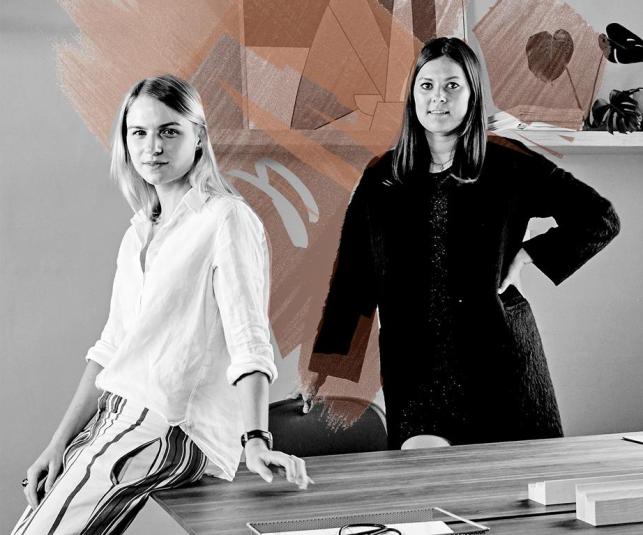14 Common Interior Design Problems — And Expert Advice on How to Fix Them

Got a burning interior design question you’ve been dying to ask an expert? Whether you’re looking for ways to style your uninviting entry hall or wondering which indoor plants would look best in your home, interior stylists and designers Christina Symes and Jessica Stewart from We Are Triibe are here to answer all your decorating and design inquiries.
Making an Entrance
Q: I have been toying with the idea of painting my front door, but I don’t know what color I should choose. Are there any colors that you love at the moment that you could suggest?
A: Painting your front door a unique color is a great way to give your home personality, especially when you live in a home with old foundations. It gives the entry a new and welcoming lease of life. Right now, our two favorite colors to use on a front door are olive green and soft shades of nude for a more understated look.
Setting the Scene
Q: Our entryway at home is empty and desperately needs to be decorated, but I don’t know where to start. Should I follow the same scheme which exists throughout my house for my hallway?
A: Although it’s not necessary to stick to a theme, it is always nice for an entrance to flow cohesively into the space it enters. Keep this in mind to ensure the scheme you create doesn’t look disjointed from the rest of your home. Use small styling details such as wall hooks, floor baskets, narrow benches, or rug runners to bring the entry space together. Pair with larger pieces such as mirrors or artwork to help create a welcoming entrance area. When selecting art, choose something that will give a striking first impression — think big and bold.
Lighting the Way
Q: I’m looking to update the lighting throughout my home and would like some advice on the type of lighting to use for the entrance. What lighting makes a home’s entry feel welcoming?
A: We like to pair practical with something that creates a sense of warmth and a welcoming feeling. This can be achieved by adding a feature wall light. Alternatively, provided your entrance is long enough, a pendant light can be great to add a bit of character. Just be mindful not to place a pendant too close to the door, as it is important to have space as you enter to see it.
Style Stalemate
Q: My partner and I have differing tastes in style. How do we meet in the middle to create a cohesive home?
A: Blending styles can actually create a really interesting and layered space. First, identify the key furniture items that you would like to be the heroes in each room, and then introduce items with a complementing form and color palette. Also, be mindful of the scale of furniture that you pair together so the room feels balanced.
Trend Tragic
Q: I find myself buying into trends which I always seem to grow tired of after about 12 months. Can you recommend ways to avoid this?
A: Firstly, it’s best to identify what interior scheme you would like to create in your space, which will in turn help you purchase more mindfully and invest in pieces that will stand the test of time. It’s OK to buy into trends, but opting for soft furnishings like throws, cushions, and tabletop items will be less expensive to replace or give away at a later date.
New Home, Old Furniture
Q: I’ve recently moved into a newly renovated apartment and I’m finding that my mid-century furniture looks disjointed. Can you recommend ways to better incorporate it into the space?
A: The best ways to create a nice fusion of old and new interiors is to establish a balance of height, textures, and finishes throughout. Start by hanging artwork in frames that complement the furniture, and introduce softer, neutral furnishings, like curtains and textural rugs, that will tie the space together.
Kitchen Elevation
Q: When selecting finishes for my kitchen renovation, I’m trying to avoid playing it too safe, but I’m worried if I opt for something like a unique black backsplash, it will feel outdated too quickly. I’d love some advice on this!
A: A great way to add a bit of interest to a kitchen without it tiring over time is to opt for neutral or earthy tones that are complementary to many schemes, and when using tiles, for example, be more unique with the tile layout or grout color. Additionally, choosing unique taps and fixtures can elevate a kitchen without having to opt for a bold backsplash.
Trash or Treasure
Q: Is it worth holding onto items that may eventually come back into fashion?
A: Like Marie Kondo says, “Does it give you joy?” If yes, then hold onto it and re-evaluate if you’ve made use of it in 12 to 18 months’ time. Otherwise, if you find yourself holding onto something unnecessarily because it may have cost you a lot or it was given to you by your mom, sell it and put the money towards something useful, or give it away to someone you know will love it.
Natural Light
Q: Is there a way of simulating the beauty of natural light in a room with only one window to make it more inviting?
A: There is! By hanging or leaning a mirror adjacent to the natural light source you can help reflect more light into your space. Opting for white walls and light furnishings, as well as considering sheer curtains or roller blinds will also help maximize natural light levels.
Ho-hum Hallway
Q: In my home, I have a long and narrow (and aesthetically boring!) hallway. It’s not wide enough for any furniture, so how can I decorate this to add a bit more personality?
A: A fun way to add more personality is to paint the hallway in a different color or shade to the rest of your house. Just be mindful with the color you choose so that it’s not too dark, because dark color applied to a narrow hallway can make it feel more enclosed. Hanging art is also a great way to add more personality. If your hallway is long, a series of photographs or paintings can add interest.
Finding Your Style
Q: What’s the best way to choose a style for my home spaces? I find myself buying lots of one-off things in different styles that don’t always work together.
A: It’s important to identify what look you are trying to create so that you can direct your purchases towards your ideal space. You can do this by collecting images of interior schemes you like and by noticing what you are drawn to. Do you gravitate toward light colors, warm tones, or cool hues? Identifying this will help you to purchase with purpose.
Styling for Sleep
Q: Something I struggle with is getting quality sleep. Is there something I can do with regards to my room layout, design, or color scheme to promote a more restful environment?
A: Firstly, consider the placement of your bed. Feng shui principles suggest your bed should be up against a hard surface, such as a wall or a bedhead to encourage stability, so try to ensure your bed isn’t situated in a breezeway. Your color scheme shouldn’t impact your sleep, so make sure it’s not jarring. In the hours before sleep, keep lighting dim and soft by using lamps or candles, encouraging your mind to switch off.
Feng Shui for Rookies
Q: I would love to incorporate some more feng shui principles into my home but don’t know where to start. What are your top feng shui tips for beginners?
A: We don’t believe in strict rules for an interior but rather what feels right to you. Three feng shui principles we love are: 1. Keep a clear space to ensure a clear mind and reduce negative tension. 2. Optimize airflow and good energy by clearing clutter from under your bed. 3. Ensure you select furniture that’s the right scale for your space, which in turn will bring balance.
Choosing Indoor Plants
Q: What are the best indoor plants to create a tranquil and relaxing space? And do you have any recommendations for what plants are best to use in a bedroom, a bathroom, and an office?
A: To create a tranquil and relaxing feel, look at species with lush sweeping leaves or ones that have a soft look to them. Try avoiding hard-edged plants such as some cacti. Ficus plants are great for bedrooms, potted vines for the bathroom, and small succulents displayed on your office desk are a great way to introduce greenery into your workspace — and they’re low-maintenance, too.
This article was written by Christina Symes and Jessica Stewart, as told to the Real Living editors. For more, check out our sister site, Homes to Love.
More From FIRST
The Prettiest Landscaping Trends of 2018
Transform Your Space by Adding a Pop of Color to Every Room
Sprinkle Baby Powder on Your Hardwood to Shush a Squeaky Floor













